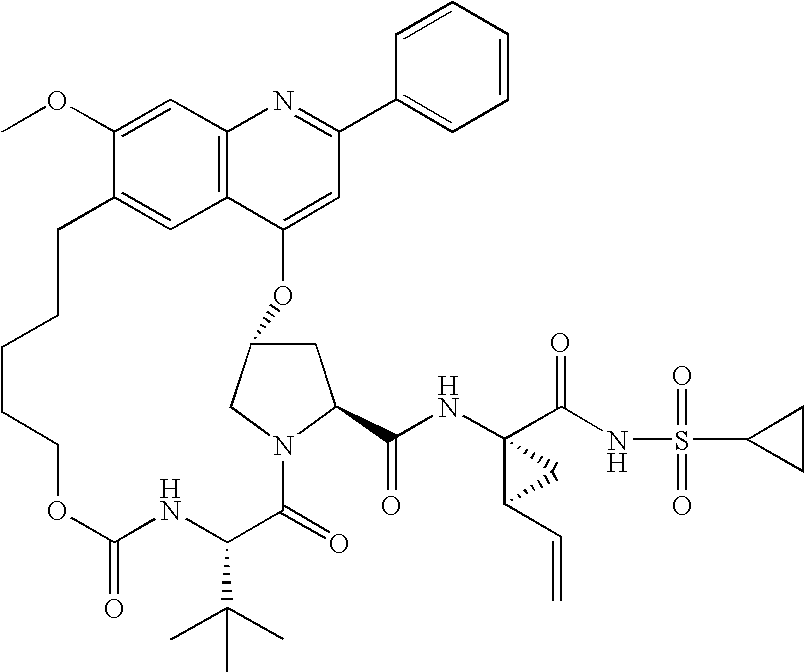Rapid method to determine inhibitor sensitivity of NS3/4A protease sequences cloned from clinical samples
a protease and inhibitor sensitivity technology, applied in the field of rapid method to determine the inhibitor sensitivity of ns3/4a protease sequences cloned from clinical samples, can solve the problems of reducing or no potency against diverse clinical isolates, progressing into liver failure and cirrhosis, and challenging development of broad-spectrum hcv antivirals
- Summary
- Abstract
- Description
- Claims
- Application Information
AI Technical Summary
Benefits of technology
Problems solved by technology
Method used
Image
Examples
example
(3R,5S,8S)-8-tert-butyl-N-((1R,2S)-1-{[(cyclopropylsulfanyl)amino]carbonyl}-2-vinylcyclopropyl)-18-methoxy-7,10-dioxo-22-phenyl-2,11-dioxa-6,9,21-triazatetracyclo[15.6.2.13,6.020,24]hexacosa-1(23),17,19,21,24-pentaene-5-carboxamide
[0046]
[0047]The title compound, also referred to as Compound A, may be prepared by the procedures disclosed in International Patent Application Publication No. WO 2006 / 119061.
Compound A Sensitivity Evaluation
[0048]The activity of Compound A against a NS3 / 4A genotype panel was extensively characterized and is shown in Table 1. The compound is extremely potent against genotype 1, retains potency against genotype 2, but loses significant potency against genotype 3. All values are averaged over a minimum of 3 independent titrations, each of which was itself perform in triplicate.
TABLE 1Activity of Compound A against an NS3 / 4A genotype panelGenotypeEC50 (nM)1b (con1)0.9 + / − 0.41a (H77)2.7 + / − 2.22a (JFH1)13.6 + / − 8.4 2b (cs8)26.4 + / − 8.6 3a (ps21)890 + / − 220
[00...
PUM
| Property | Measurement | Unit |
|---|---|---|
| volume | aaaaa | aaaaa |
| alkaline phosphatase | aaaaa | aaaaa |
| length | aaaaa | aaaaa |
Abstract
Description
Claims
Application Information
 Login to View More
Login to View More - R&D
- Intellectual Property
- Life Sciences
- Materials
- Tech Scout
- Unparalleled Data Quality
- Higher Quality Content
- 60% Fewer Hallucinations
Browse by: Latest US Patents, China's latest patents, Technical Efficacy Thesaurus, Application Domain, Technology Topic, Popular Technical Reports.
© 2025 PatSnap. All rights reserved.Legal|Privacy policy|Modern Slavery Act Transparency Statement|Sitemap|About US| Contact US: help@patsnap.com

